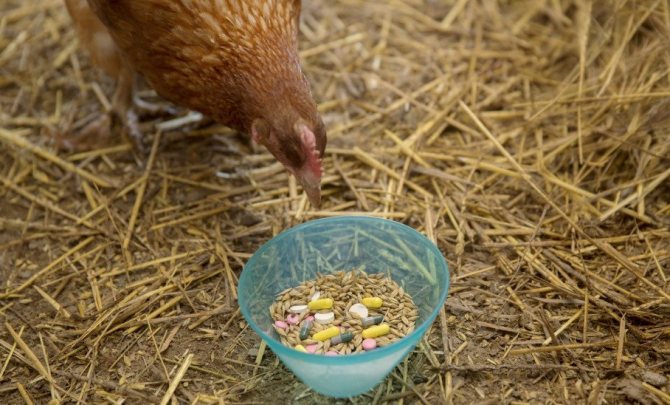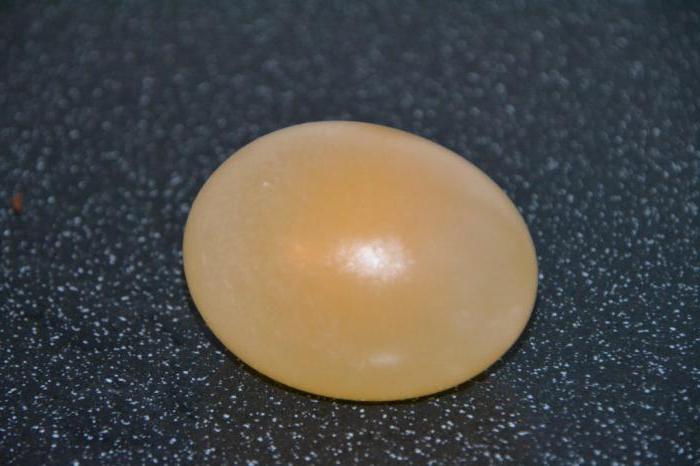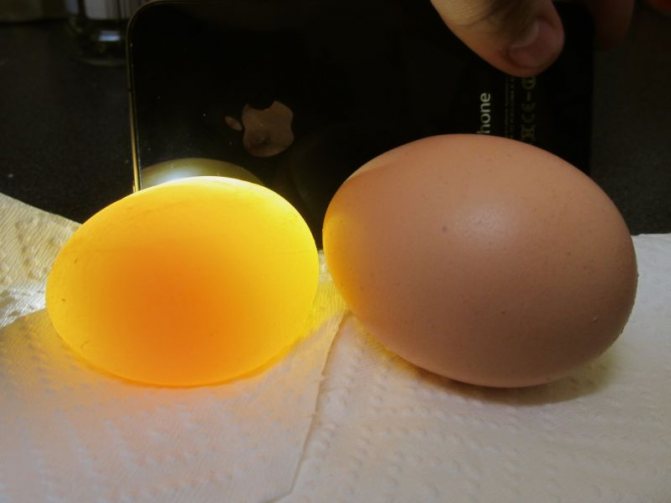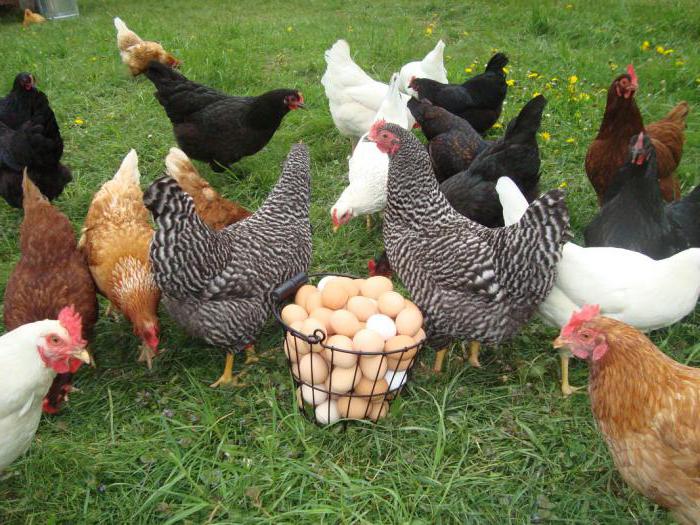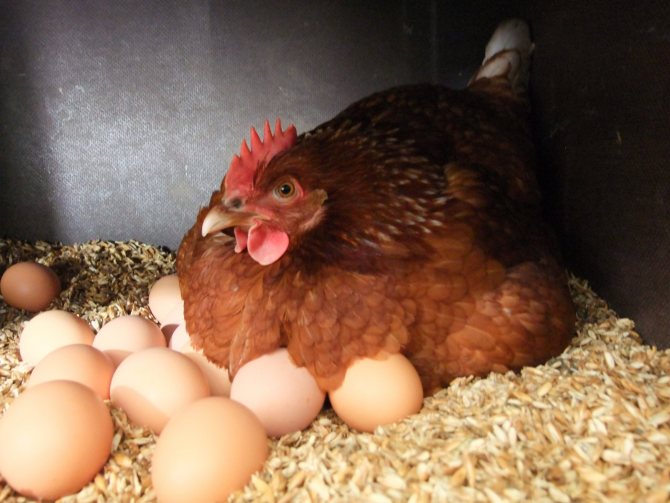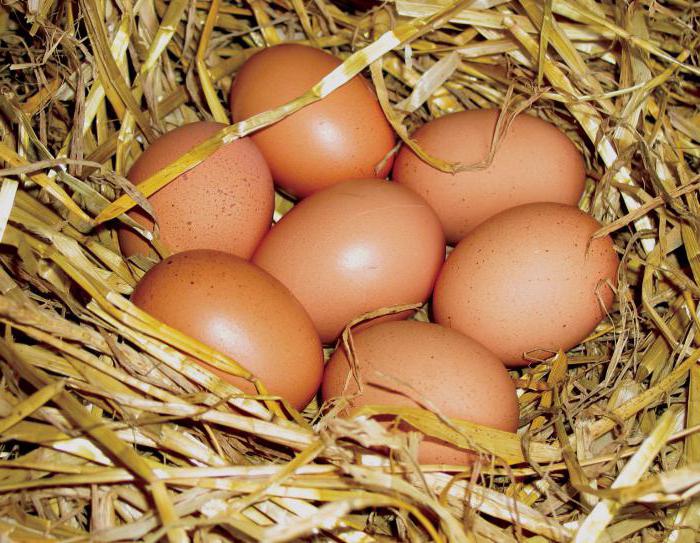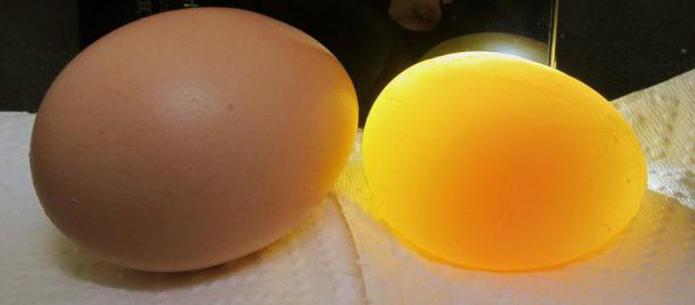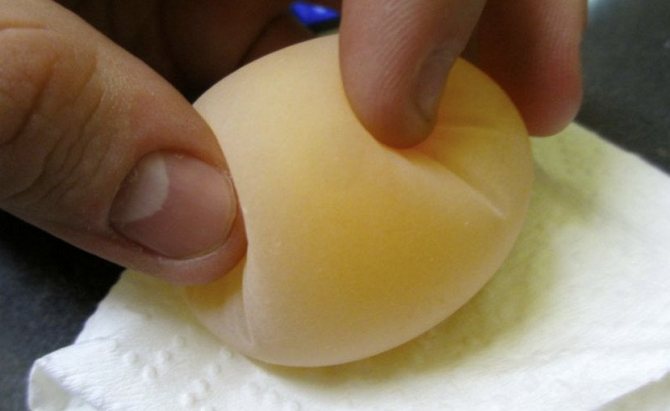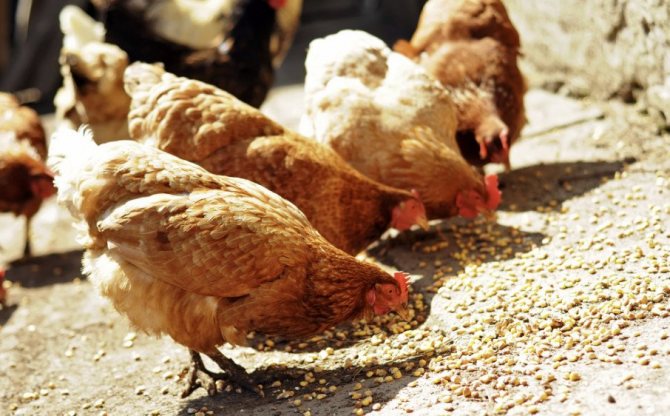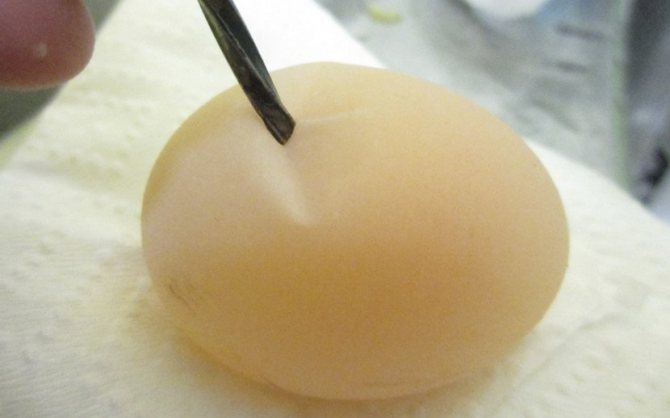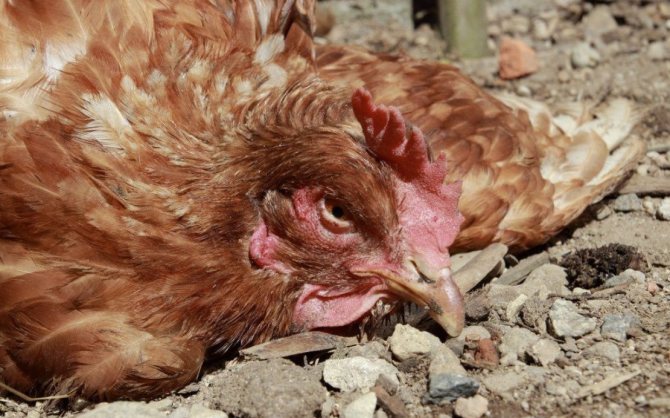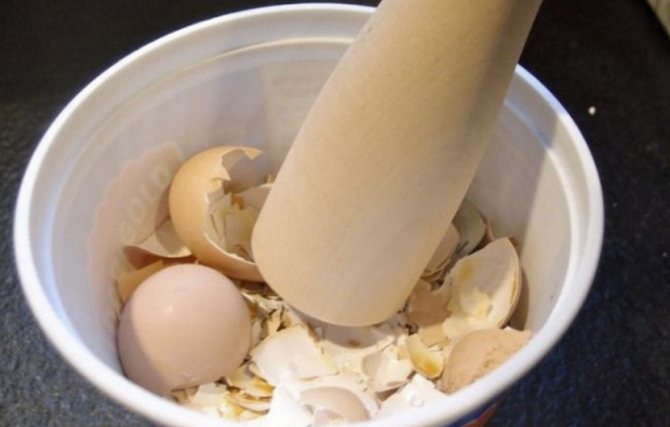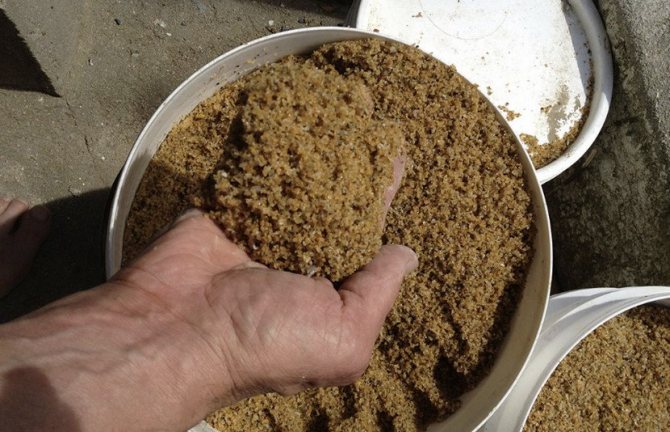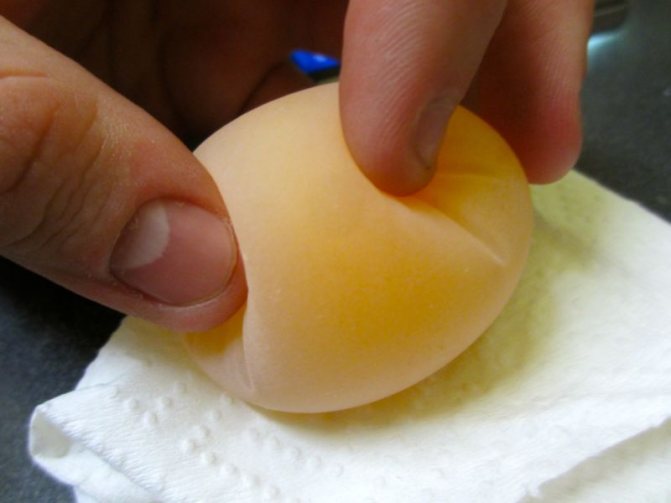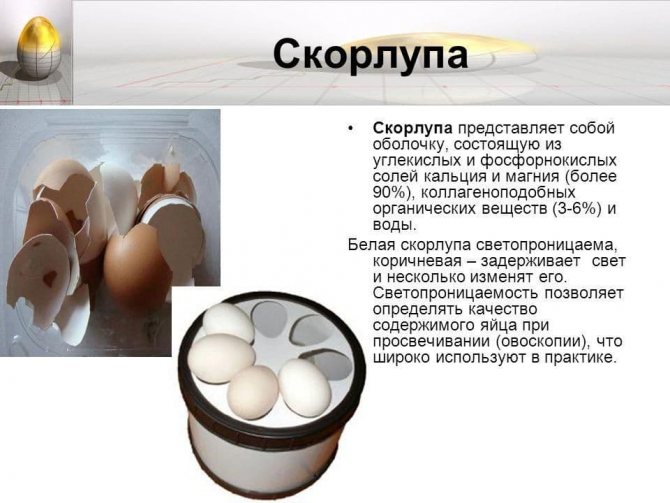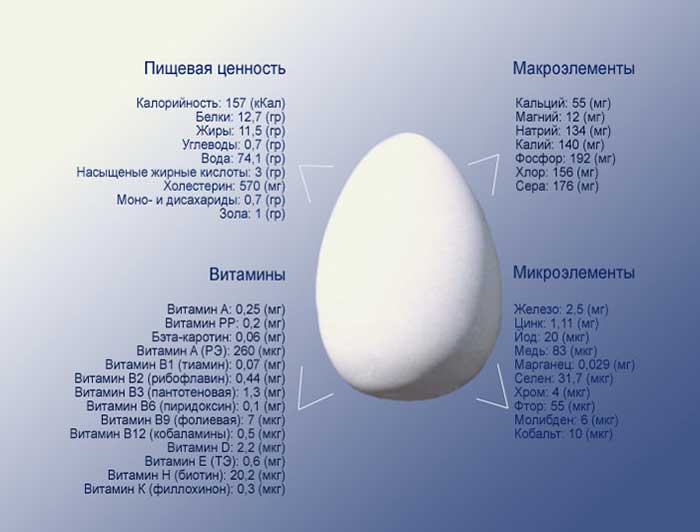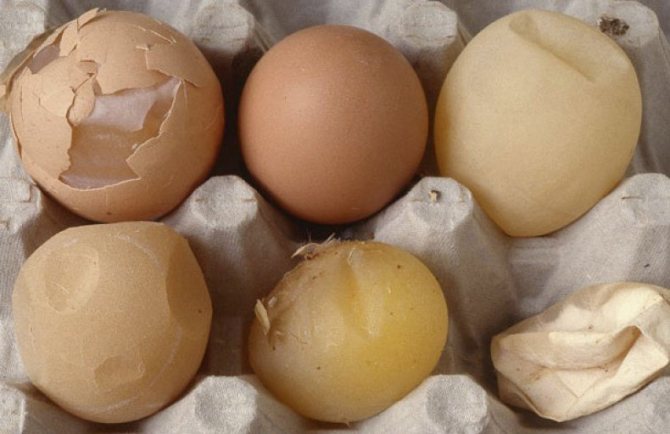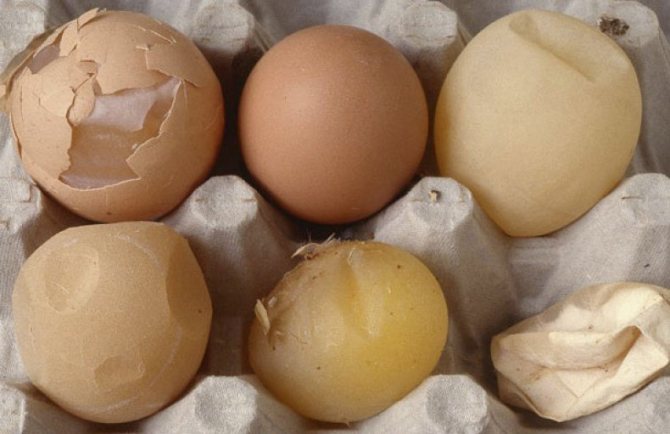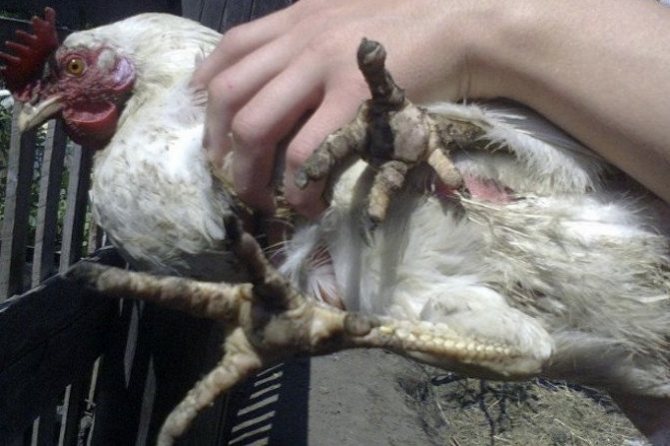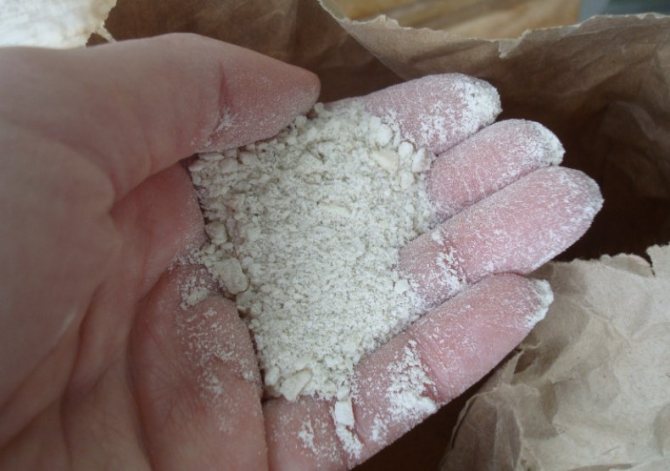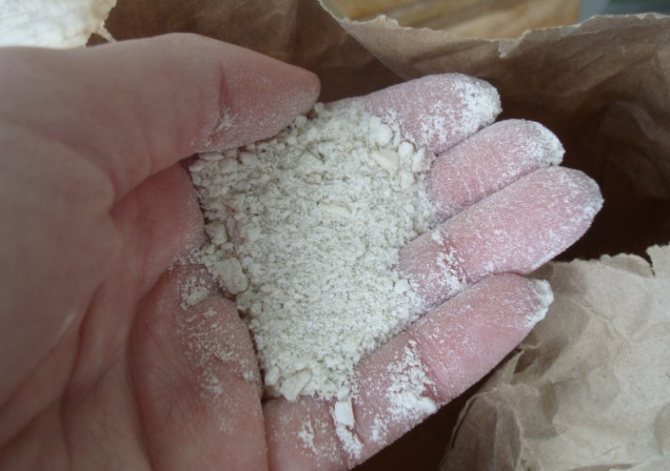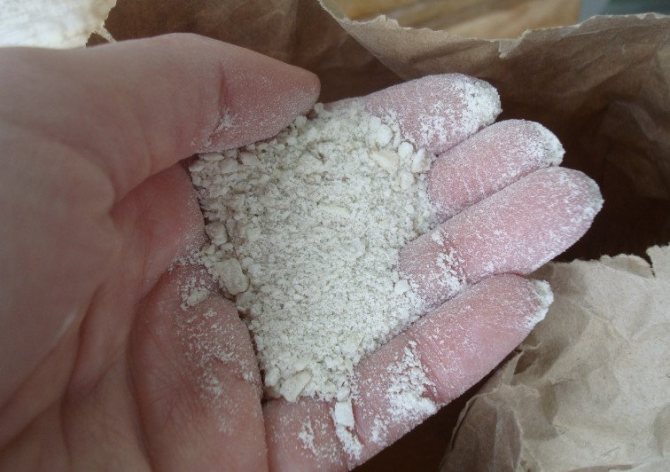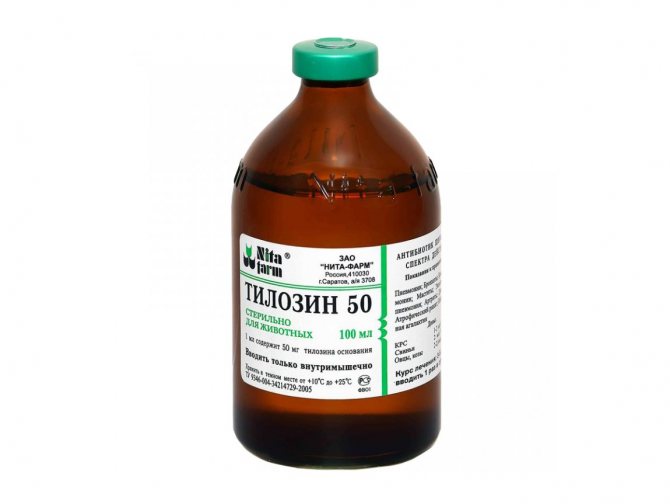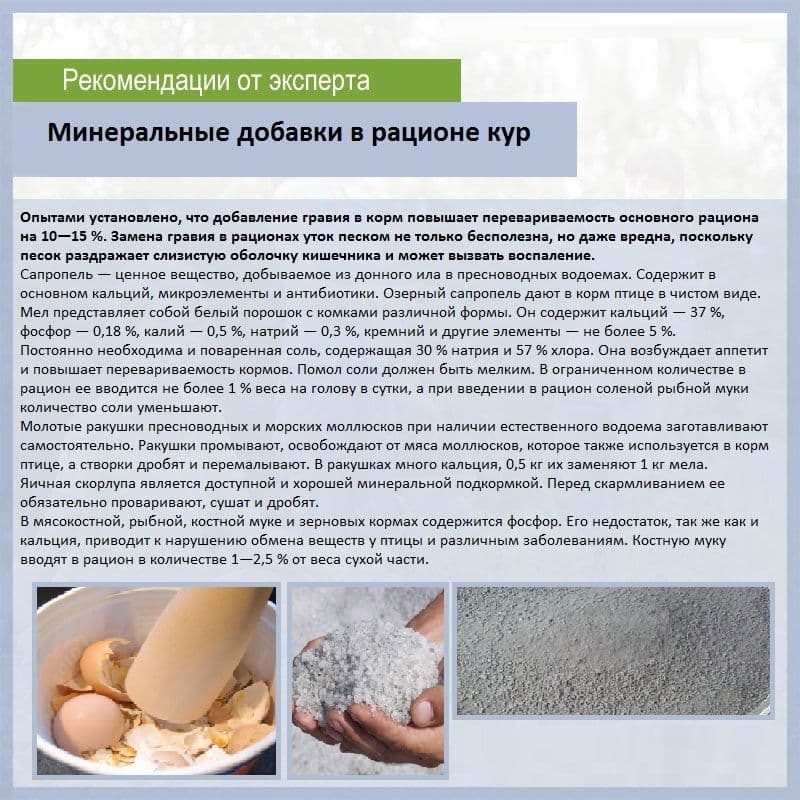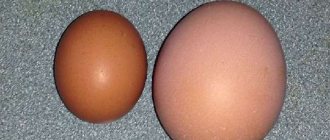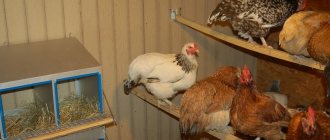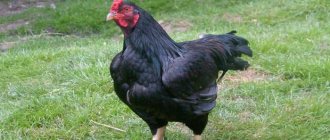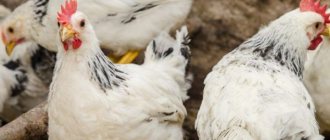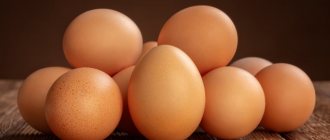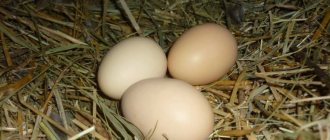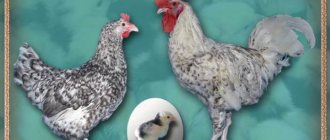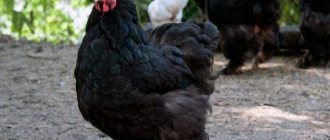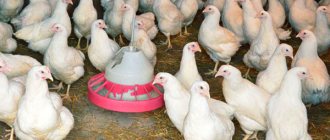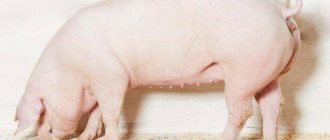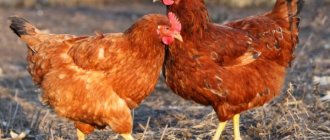Conditions of keeping chickens
To understand why chickens lay eggs without shells, how to fix this, you need to thoroughly study the conditions of their keeping. They must meet certain requirements. For the construction of a poultry house, you can use any materials that are available in the household, but experienced breeders recommend using exclusively natural materials for construction. The building must be solid and reliable, a ventilation system and thermal insulation are required.
For the equipment of the ventilation system in the ceiling of the room, it is necessary to make a hatch with doors, which, if necessary, can be easily and quickly opened or closed. It is possible to provide young birds with comfortable conditions for staying in the chicken coop only if it is equipped with an additional lighting system. For this, you can use fluorescent lamps.
Important! Windows must also be installed in the walls of the chicken room. This will provide the house with daylight throughout the day.
In order for chickens to grow healthy, sanitary standards must be observed in the barn. To do this, the room must be periodically cleaned and disinfected with a weak solution of lime or potassium permanganate.
The floor should be equipped at a slight angle (25-35 degrees). Thanks to this, cleaning the chicken coop will become easier and more convenient. To prevent the feet of chickens from freezing during cold weather, it is covered with hay or dry grass. The litter changes as it gets dirty.
In the hen house, bird roosts are arranged, which are used for sleeping. To do this, you can use wooden boards 40 cm wide. The perches are mounted at a height of 35-50 cm from the floor level. To save free space indoors, perches can be built in several tiers.
The house should have several nests for laying hens. They can be made from wooden boxes, the cavity of which is covered with straw.
Important! The number of nests should correspond to the size of the livestock.
Chickens must have a place to walk. This area is fenced off with a fence or mesh. The height of the fence should be such that birds cannot fly over it. Experienced breeders advise sowing the area with perennial grasses. This will enable the chickens to self-feed the essential minerals.
For feeding chickens, it is necessary to use combined feeds that contain the required amount of minerals and trace elements. Minimize the amount of food from your home kitchen.
Preventive actions
So that the thin shell of chicken eggs does not become a problem, preventive measures are taken to prevent this phenomenon in poultry farming:
- feeding is carried out with balanced feed in accordance with the season and the needs of the livestock;
- provide a normal regime for keeping, walking birds and caring for the premises;
- In a timely manner, sick and old individuals are identified, separating them from healthy birds and culling.
Why chickens lay eggs without shells
In birds that live in the wild, it is very rare for hens to lay eggs without shells.This is due to the fact that wild chickens lay eggs only for the continuation of offspring, and domestic chickens act as a mini-factory for supplying eggs to people.
There can be several reasons for the deformation of the outer shell of eggs.
Eggs without shell
Lack of vitamin D3 in the body of a bird
Food for chickens must fully provide their body with all the necessary minerals and components, including calcium. If there is any doubt about the quality of the feed, it is recommended to feed the birds. To do this, you can use powdered calcium, shellfish or small shells, eggshells. Experienced breeders recommend using special compound feed for feeding chickens.
Important! Grain should not be allowed to become the main part of the diet of birds.
The ideal egg should be oval and not rough. If the pullet laid an egg in a soft shell or film, this should be a signal that there is not enough calcium in its body, and therefore, it is necessary to change or supplement its diet.
In such birds, the skeletal system is the first to suffer. To be sure of such a problem, you need to carefully feel the keel of the bird. If it is soft or flexes easily, then there is a problem. If you do not take any measures in a timely manner, the possibility that the chicken will die is not excluded.
Other common reasons:
- There are too many salts in the diet of chickens. They have the ability to slow down the absorption of calcium. As a result, the chicken will lay eggs not in the shell, but in a film. The reason is that chickens are given too much waste from the home kitchen or water is poured into the drinkers, which has previously passed through a softening filter.
- The stress that the laying hen endured. Fear during a thunderstorm, when attacked by a predator, or during a fight with an adult rooster can act as a stress provocateur. This situation can be corrected by separating chickens of different ages from each other.
- Not enough water. Dehydration of the laying hen's body leads to the fact that the egg gets stuck in the oviduct, where it is overgrown with a calcium film. Layers' drinkers should always have fresh, clean water available. In winter, it should not freeze.
- Large amount of calcium in the feed. With an excess of this component, the eggshell becomes very rough. In winter, when there is little sunlight, it is necessary to equip the poultry house with additional artificial lighting. Otherwise, the chicken in the body will accumulate calcium, which also enters its body with the combined feed.
- Incomplete reproductive system of young layers. This leads to the fact that the hen will lay an egg without a shell, in a film. Nothing can be done in such a situation. The reproductive system of pullets will self-regulate in a few weeks. If an old laying hen has laid an egg in a film, this may indicate that her reproductive system has become weak.
- Violation of the hormonal system in birds. This problem is usually caused by the age of the hen. It is not uncommon for older hens to lay eggs with two yolks. Such a chicken cannot be called sick. This does not affect the taste and quality of the eggs in any way. The process of egg formation is influenced by hormones. If the hormonal system malfunctions, the process of egg formation is also disrupted. As a result, eggs will appear without shell, but in a film. You don't need to do anything in this situation. The chicken will cope with it herself after a while.
Required items
Feeding chickens is determined by age, season, molting period. But the feed must always be balanced.
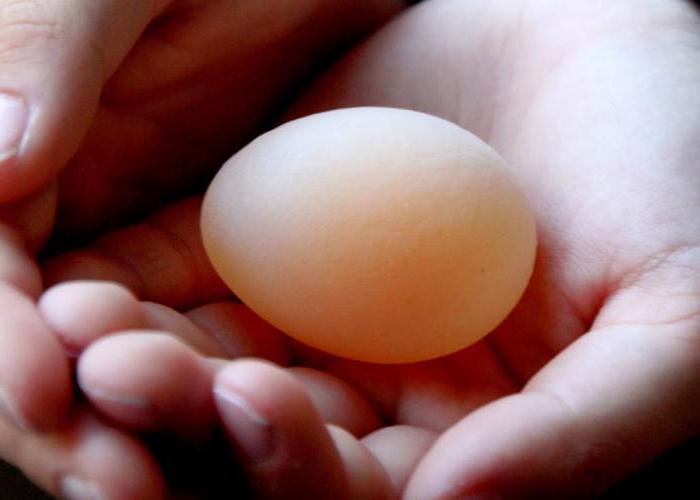
The necessary components include:
- Proteins are a building block of animal and plant cells. They are essential for egg formation.The component is present in fish and bone meal, milk, fish waste. From plant products, oilcakes and meal can be given.
- Fats serve as an energy reserve. They are found in corn and oats.
- Carbohydrates are essential for the life of birds. Components are found in starch, sugar, fiber.
- Vitamins A, B, D. The diet should include foods such as pumpkin, corn, carrots, oats. Weeds are also useful - quinoa, nettle, dandelion. Vitamin B is found in fish oil.
- Mineral substances are needed for the formation of the shell, so there must always be feed chalk, small shells, and gravel in the feeder.
Why does a chicken lay eggs without shell
What to do if a hen lays eggs without shells? Why don't ducks and geese have this problem? The sight of an egg lying without a shell is rather unpleasant. If a chicken laid an egg without a shell 1-2 times, this is an ordinary malfunction in the body, but if this is repeated regularly, you need to sound the alarm. There are several reasons why chickens lay eggshellless eggs.
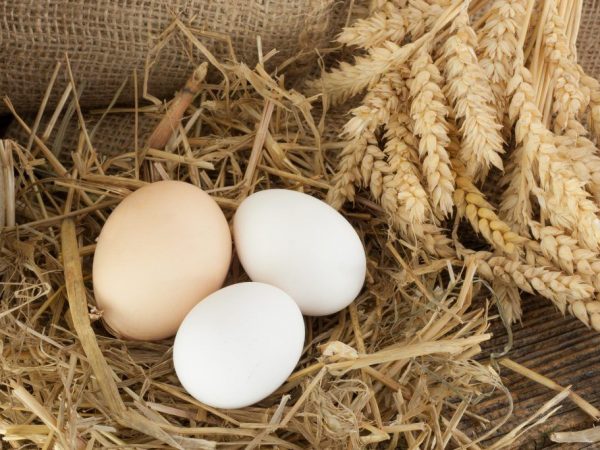

Chickens lay eggs without shells
If a chicken laid an egg without a shell, you need to figure out the reason for the appearance of such a problem, and if the egg is completely without a film, you urgently need to save the bird: this is the last stage of the disease. What to do? It is necessary to analyze all the factors.
The first signs of violation
When a hen lays eggs without a shell, a film forms in its place. The egg itself looks normal, only its coating is not firm, it is very easy to damage it. There are times when a bird pushes an egg out of itself in the form of a liquid. At the same time, the chicken cannot leave the nest for a long time and behaves extremely restlessly. Treatment cannot be postponed.
The first reason is poor heredity.
The second reason is health problems: the laying hen has a weak reproductive system, and she cannot carry fully formed eggs. An individual may already be elderly, and therefore physically not have the ability to carry an egg in its shell. It is necessary to disassemble completely, inside and out, the physical condition of the bird, its nutrition, whether it was exposed to stress.
Mycoplasmosis (respiratory mycoplasmosis)
Chickens of all ages can become infected with mycoplasmosis.
Symptoms of the disease: wheezing, coughing, shortness of breath, mucous discharge from the nasal passages, sneezing, decreased egg production, conjunctivitis, inflammation under the eyes, inflammation of the oviduct in layers, the appearance of eggs in the soft shell, the death of embryos.
To get rid of poultry from mycoplasmosis, aqueous solutions or intramuscular injections of antibiotics are used: tylosin, pharmacin, enroflox, enroflon, pneumotil, tilanik, tylocolin.


Main reasons
Factors for the occurrence of such a problem include poor ecology, improper diet, stress, hormonal disorders, changes in ovulation, age. If you let this problem take its course, you can be left without layers at all.
- Improper nutrition. Chickens usually lack calcium as well as various vitamins. Due to poor feeding, the chicken will have soft and wobbly bones (keels), which entails no shell. Shellwood, calcium, fine gravel are good options at home to improve feeding for layers. But in the case of an excess of these components, a violation can go in the opposite direction: it will be difficult for a chicken to lay an egg. The first symptom will be that the laying hen sits in the nest for a long time and cannot get off it.
- Hormonal disruptions and disorders. Due to some stressful situations, the laying hen may fail in normal maturation and egg formation, which will lead to a large yield of eggs without shells.
- Infectious and viral diseases. This is one of the reasons that cannot be cured at home. There are a lot of such diseases, but the most common are EDS-76; bird flu; pseudo-plague.In infected individuals, the egg may be of an unusual shape, with a soft shell or without it at all.
- Formation of a rough and compacted egg shell surface. This indicates an insufficient amount of water in the body of pullets. In such cases, the chicken also cannot leave the nest for a long time, the function of egg production is impaired. The egg, enveloped in calcium, becomes dehydrated and unviable. Water problems can arise in winter. Laying hens must have constant access to water.
- Stressful situations. If hens are stressed, they need some time to move away. After a couple of days, they will begin to rush normally again.
Is there an alternative?
Those owners who live near rivers and see how chickens collect shells never have problems with the hardness of the egg shell.
If there are plenty of shells and chickens have free access to it, then calcium problems are solved by themselves. You can buy top dressing in specialized stores, in the markets, or you can prepare it yourself.
We advise you to familiarize yourself with: how to feed the layers to increase egg production.
Diseases and infections
This problem deserves more attention. Infectious diseases and viruses cannot be destroyed without knowing the parasite and the disease itself. That's what a veterinarian is for. As soon as the first signs of infection appear, an urgent need to call a doctor. Common viruses include pseudo-plague or Newcastle disease, mycoplasmosis, bird flu, encephalomyelitis, etc. These diseases impair the quality of eggs, destroy the reproductive system of laying hens, sometimes even with a lethal outcome.
- With pseudo-plague or Newcastle disease, the complete destruction of chickens occurs, and not only those contained in one chicken coop, but also in nearby ones. This virus spreads easily and quickly from the hen house to the hen house.
- Poultry suffering from infectious bronchitis or mycoplasmosis can be disposed of. The essence is the influence on the formation of the shell in the oviduct, its softening and destruction. The output is the same chicken egg in a soft film. However, this virus can also be cured with aerosols and various drugs, but only at an early stage of the development of the disease, otherwise the bird must be disposed of.
- One of these viruses - helminthiasis - is dangerous not only for the chicken coop, but also for humans. If you eat an infected chicken egg, the parasite enters the human body. Immunity is powerless against such a disease, so the sooner it is detected, the higher the chances that no one will get infected.
Prevention is the best solution to prevent viruses and infections. If preventive measures are taken correctly and in a timely manner, problems with the depletion of chicken eggshells can be avoided.
Why does a chicken lay eggs without shells?
Good afternoon, experienced and novice poultry farmers! Today we will find out the reasons why a hen lays eggs without shells. And what to do in this case, how to quickly rectify the situation. Eggs are one of the main waste products of laying hens. For laying hens with high productivity, the following qualities of egg products are characteristic: excellent taste of the contents, sufficiently strong eggshell.
However, it happens that chickens begin to lay eggs with a thin or soft shell, or without it at all - in a thin bag. Why this is happening, and how to help the birds - we will look for answers to these questions together.
Rules for caring for laying hens at home
Laying hens need to create special conditions so that they carry eggs of full weight and quality.
First of all, you need to equip the chicken coop:
- The room should be spacious enough - no more than 4 individuals can be placed per 1 m2;
- it should be free of dirt and dampness to exclude the possibility of infection;
- the temperature in it should be at least 7 degrees Celsius, and the humidity should be no more than 64-66%;
- ventilation is arranged in the poultry house so that there is fresh air in the room;
- there should be no drafts in it;
- there must be a window in the poultry house;
- a place for walking is also being set up, on which the chickens will spend the whole daylight hours in the summer;
- in winter, the hen house is equipped with heating batteries, additional lighting is also installed so that the daylight hours for layers in winter are about 13-14 hours;
- When keeping chickens on the floor, the litter must be clean and dry. Usually it is made thick (up to 30-35 cm thick), if the top layer becomes dirty, then it is replaced with a clean one. The basis for the litter can be: straw, sawdust, high-moor peat mixed with river sand, because such materials absorb moisture well;
- also perches, nests, feeders, drinkers are arranged in the room.
- The length of the perches is set at the rate of 25-30 cm per 11 hens, the nests are set at the rate of 1 nest per 4 hens.
Why does a chicken lay eggs without shell
Most often, birds begin to lay eggs with a thin shell or without it at all, if farmers do not follow the basic rules for feeding and keeping them.
List of possible errors:
- in the daily menu of these individuals, the dose of vitamin and mineral supplements is below normal;
- the birds have a hormonal disruption in the body;
- the content of chickens does not meet the requirements;
- birds are infected with an infectious disease.
Important! If eggs with soft shells rarely appear in layers, then this may simply be a temporary failure in their body. If, within several days, one individual (or several) eggs with a thin shell or without it are found, then one should look for the reasons why this happened.
Problem prevention
To minimize the risk of morbidity in chickens, you must adhere to the following recommendations:
- give birds only suitable and fresh food;
- keep the chicken coop clean;
- treat the room with disinfectants every 2 months;
- containers with food must be closed, otherwise rodent-borne infections may enter the food.
To prevent infectious diseases, young animals need to be vaccinated on time..
What to do, how to fix it
Often, poultry farmers do not include vitamin and mineral supplements in their daily menu, believing that it is enough for chickens to receive only basic feed every day. However, this is a misconception.
Need to know. why a chicken lays eggs without shells! When eggs with thin or soft shells appear in nests, this may mean that the birds are lacking P and Ca.
Attention should be paid to the general condition of the individual - if the keel is too soft, unsteadiness is felt, this means only one thing - the bird does not have enough calcium to form a strong shell, therefore calcium is taken from the bones for its formation.
The result will be disastrous - the skeleton of the bird will weaken, it will not walk well, fall, in the end, the individual will die.
This problem is easy to solve - it is enough to diversify the diet of this poultry - to introduce the following products into the daily menu:
- chopped greens;
- vegetables;
- fruits;
- grain (sprouted);
- flour (meat and bone, herbal);
- yeast;
- bran;
- finely crushed eggshell;
- shell rock;
- fine gravel;
- wood flour (aged);
- a piece of chalk.
In winter, be sure to include a vitamin and mineral complex in the diet.
An excess of calcium is just as bad for this domestic chicken, as is a lack of it. The main signs of an overabundance of this macronutrient are a deterioration in appetite, a decrease in egg production.
If the diet of chickens is compiled correctly and well balanced, then the reason for the soft shell in eggs may be a violation of the hormonal background in these birds. In this case, it is necessary to urgently contact a veterinarian who will establish the cause of such a failure and prescribe the necessary treatment.
Sources of organic calcium - the basis for the strength of the shell
Contacting a veterinary pharmacy, the owner will be advised a variety of drugs, which include trace elements. However, experience shows that it is necessary to ask a lot of such feeding, and a lot, and the problem is solved slowly.
Organic calcium is a completely different matter. In the summer, everything is clear (everything that crawls and flies), the chicken will provide itself for grazing. Where to look for sources in winter?
Animal feed comes to the rescue:
- meat and bone meal;
- fish flour;
- slaughterhouse waste (scars, pork skins, minced meat for animals);
- curdled milk, reverse (milk whey).
Californian worm is a great addition. Europe has been breeding it for a long time. It is used to produce food for cats and dogs, as well as supplements for poultry.
Diseases of chickens
Another reason for the appearance of eggs with soft shells may be the presence of an infectious disease in chickens. Each of these diseases should be discussed separately.
Egg drop syndrome
The main symptoms of the disease:
- decrease in egg production;
- the laid eggs are deformed, have an irregular shape, the shell becomes discolored over time;
- the shell softens.
Most often, birds that are regularly outdoors are susceptible to this disease. The pathogenic microorganism enters the feed eaten by poultry.
Newcastle disease
Currently, it is impossible to cure birds affected by this disease. And this disease spreads very quickly. More often this disease affects chickens up to a year. Sick birds are immediately slaughtered and the carcasses are destroyed.
Infectious bronchitis
The pathogenic microorganism that causes the disease affects the respiratory system of this poultry. If pullets are affected by bronchitis, their productivity will be low, the ovaries and oviduct are not fully developed. As a result, hens lay eggs with soft shells.
- the beak is constantly open;
- breathing in individuals is noisy;
- birds become lethargic and awkward;
- birds seek heaters and other sources of heat;
- loss of appetite;
- foreign discharge from the eyes, including pus.
Although the treatment of bronchitis is currently being carried out, the diseased individual after the treatment is still infectious for a year. Therefore, veterinarians recommend slaughtering sick birds at the first signs of this disease, and destroying the carcasses.
Parasites
Another reason for the appearance of eggs with a soft or thin shell is the presence of parasites in their body. You should contact your veterinarian who will prescribe special medications for treatment.
Additives
Some farmers add stimulants to their feed to increase production. But they lead to the death of birds in a short time. When buying supplements, you need to read the instructions, buy them according to the age of the layers.
Means "Ryabushka", "Laying" are added to feed, which allows the birds to cope with stress. It is recommended to give an adult bird the PK-1 compound feed. Premixes compensate for the lack of vitamins and minerals, and also reduce the consumption of the main feed. There are other additives that are added to the feed for laying hens. Their use will eliminate the problem of the appearance of eggs without shells.

